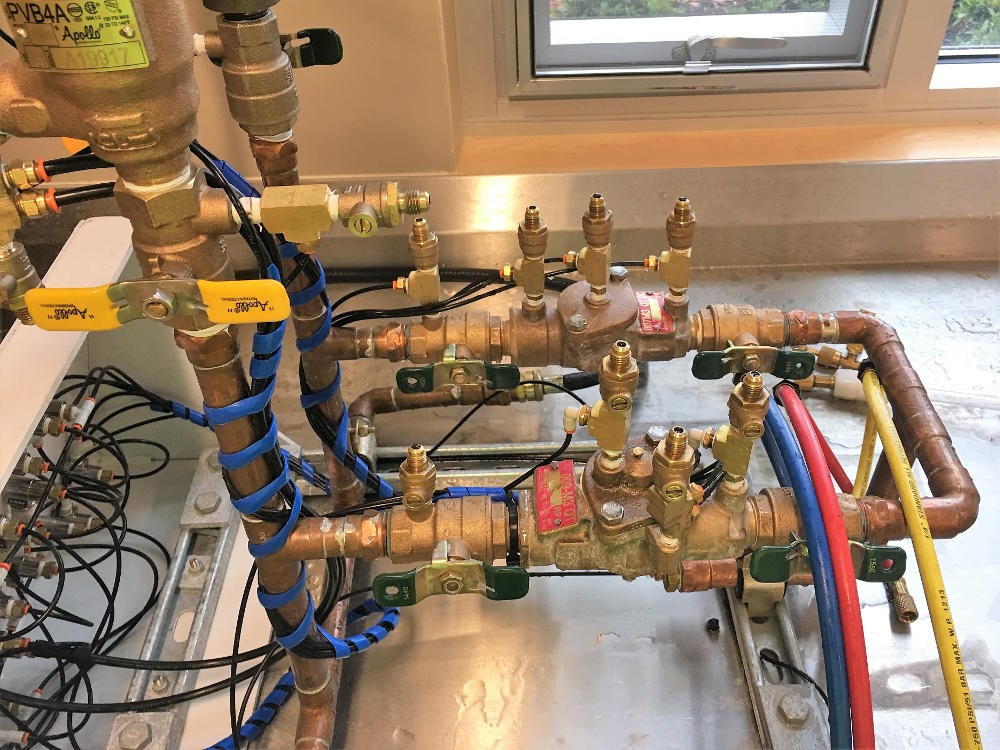Should I Have a Backflow Test for My Water
Should I Have a Backflow Test for My Water
Blog Article
We've discovered this article involving Is backflow testing necessary? listed below on the net and accepted it made perfect sense to share it with you here.

Yes, you need to backflow examination your home's water to make certain that the water is free of toxic substances and also harmful levels of chemicals. As a result of the tools required and also room for mistake, you must not attempt to do heartburn screening on your own. We suggest that you call a specialist plumber every couple of years to evaluate your water.
Backflow Can Effect Both You as well as Your City
Many cities develop heartburn standards since dangerous backflow can influence the public water system along with a single building. Modern cities have backflow gadgets in place that safeguard the water supply that comes from many homes as well as business residential properties. The real threat comes from irrigation systems, which can damage the water system with hazardous plant foods, manure, and other chemicals.
What Creates Backflow?
A common reason of heartburn is a loss of water pressure that causes the water to siphon back right into the water supply. After some time, there is a loss in water pressure and the hose starts to draw the water back into the water supply. As you can envision, there are now chemicals from the paint that are getting in the water supply, potentially posing a risk.
Heartburn Screening is Called For by Legislation in Specific Cities
Depending on where you live, you might really be called for by regulation to backflow test your law. Iowa City maintains a document of all buildings served by the city's water supply.
You Can Protect Against Backflow
The primary objective of a heartburn device is to avoid water from streaming in reverse right into your water supply. Plumbings set up the tool on the pipelines in your residence to ensure that the water only streams in the correct instructions.
What is Backflow?
In other words, backflow is when water moves upwards-- the opposite instructions in the plumbing system. This is also referred to as "backpressure." When the water moves in this instructions, it can combine with dangerous toxins and also present a threat.
Call a Plumber to Evaluate for Backflow Before It is Too Late
A plumbing business can quickly test your residence's water to figure out if there are any harmful chemical degrees. And also if you do find that your water has high degrees of contaminants, a plumber can conveniently set up a heartburn avoidance device.
Yes, you require to backflow test your residence's water supply to ensure that the water is complimentary of contaminants as well as damaging levels of chemicals. Lots of cities establish backflow standards due to the fact that harmful backflow can influence the public water supply in enhancement to a single structure. A typical cause of heartburn is a loss of water pressure that causes the water to siphon back into the water supply. After some time, there is a loss in water pressure and also the tube begins to suck the water back right into the water supply. The major purpose of a backflow device is to avoid water from flowing backwards right into your water supply.
WHY DOES BACKFLOW TESTING NEED TO BE DONE EVERY YEAR
What Is Backflow?
Toxic gas backing up into a building is one example of potential backflow issues, but backflow can occur in many other ways.
Backflow is generally referred to as the reversal of a liquid or gas in a plumbing system.
Most issues for the public occur with backflow resulting in contaminated drinking water. If you look up backflow issues online you’ll probably find references to “potable” water. That means drinking water.
There have been backflow issues in the past with drinking water. Chemicals, sewage and other contaminants have found their way into drinking water causing health issues for those that count on the fresh water.
What Causes Backflow?
In a residence or commercial building water generally flows one way. This normal flow is usually driven by consistent pressure in the water and waste system.
Anything that changes the normal pressure in the system can lead to backflow.
Fire hydrant use or malfunction can reverse the normal pressure in the system on a city line, but backflow can occur in a number of different ways.
Sometimes backpressure might be caused by someone using a garden hose and submerging the end of the hose in a pool of liquid. If pressure is lost the flow could reverse and contaminants could be released into the drinking water.
Anytime there is a connection between contaminants and the drinking water there is potential for a backflow issue. Sometimes these connections are not immediately obvious like the garden hose connecting to a building’s drinking water supply.
Backflow Regulations
The Environmental Protection Agency (EPA) provides guidelines and regulations for state and local governments regarding backflow. State and local governments also have their own guidelines and regulations for backflow prevention.
Arizona has its own backflow regulations.
Due to issues with backflow in the past, regulations require backflow preventer devices to be used in nearly all residential and commercial buildings.
A backflow preventer is a device that prevents backflow as cross-connection points where potential backflow issues may occur.
While backflow is not a common occurrence, preventers are in place to make sure there is no contamination should something malfunction or go wrong with a building’s water supply.

I found that piece of writing on Is backflow testing necessary? while exploring the search engines. Sharing is nice. You won't know, you may very well be helping someone out. Thanks so much for going through it.
Tap leaking? Call us. Report this page